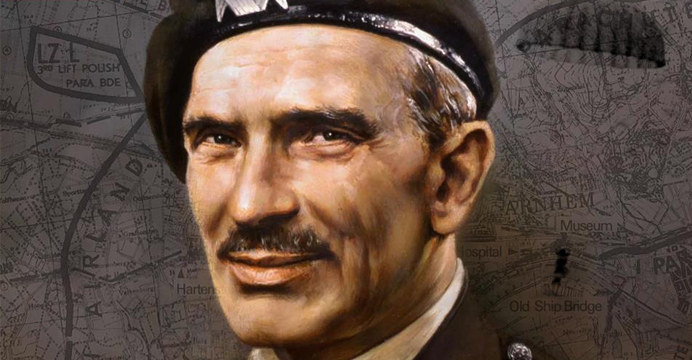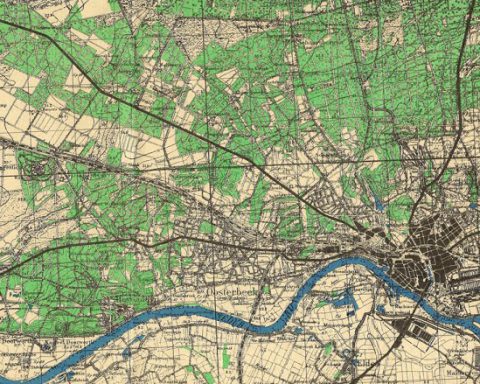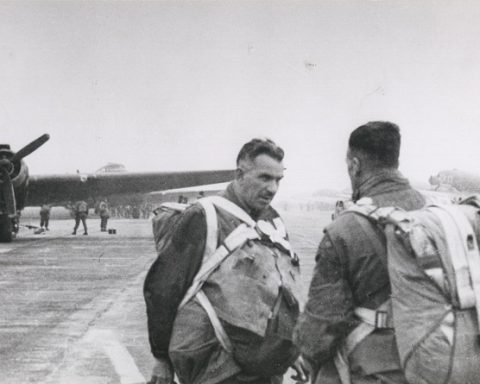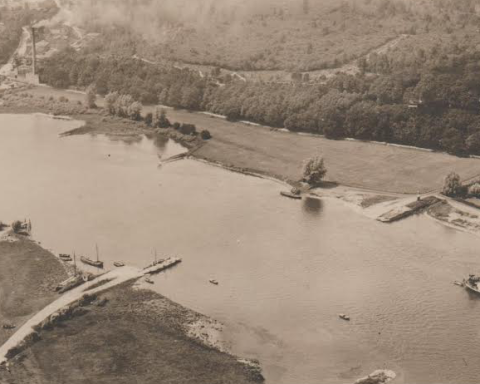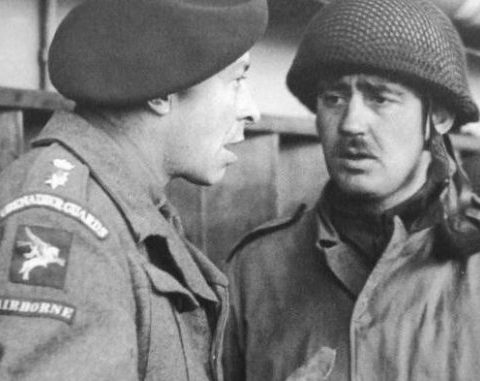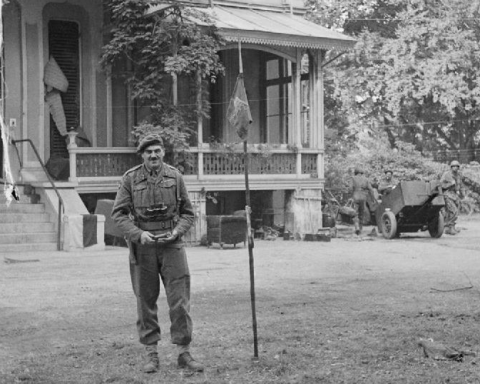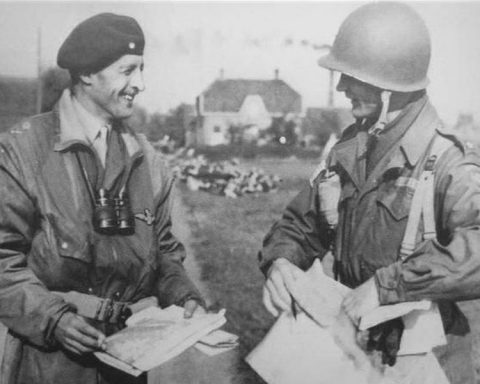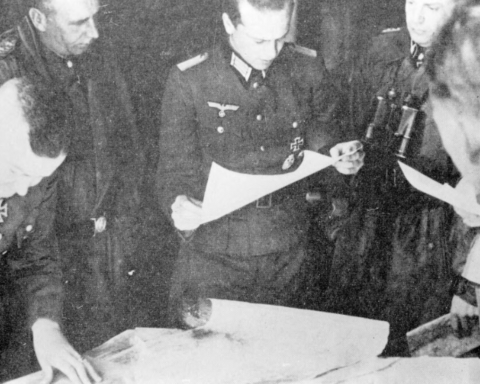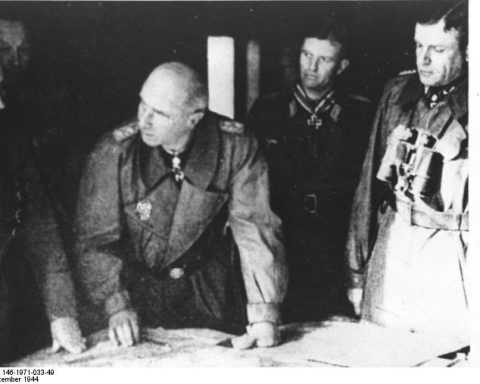Difficult, stubborn, unmanageable, passionate. Polish General Stanislaw Sosabowski was it all. But he is not responsible for the defeat at Arnhem, as the British have claimed for decades.
In fact, many of the insights General Sosabowski presented before and during Operation Market Garden turned out to be correct.
Sosabowski and the Polish Parachute Brigade have since received the full rehabilitation they deserve, but for Sosabowski, recognition came only after his death. Sosabowski died poor and destitute in a London hospital in 1967 after working anonymously for years in the warehouse of an English electronics factory.
Many of his former colleagues only heard about Sosabowski’s heroic war efforts at the Battle of Arnhem during the funeral.
During the First World War, Sosabowski was a soldier in the army of Austria-Hungary, which also included part of later Poland. After Poland regained independence in 1919, Sosabowski helped build the Polish army.
Within the army, Sosabowski rose in rank and in the late 1930s he was colonel of the 21st Infantry Regiment. When Nazi Germany invades Poland on September 1, 1939, Sosabowski defends Warsaw with his regiment.
After the capitulation of Poland, Sosabowski, like many other Polish soldiers, fled to France. The Polish soldiers there form a new Polish army that helps defend France. After France is also overrun by the Nazis, Sosabowski flees to England.
Doom thinker
When the Polish General Staff in London in 1941 decides to found a Polish paratroopers brigade, Sosabowski is appointed commander of this new unit. It has been agreed with the British army leadership that the 1st Polish Parachute Brigade will only be deployed in Poland.
When the uprising in Warsaw breaks out in early August 1944, the Polish paratroopers expect to be dropped in Warsaw, but the British army leadership decides otherwise. The Polish paratroopers are added to the 1st British Airborne Division, with the aim of being deployed at Arnhem.
Sosabowski is not in favor of Operation Market Garden. According to Sosabowski, the British assumptions about the German defense in Market Garden’s plans are far too optimistic. The Polish general repeatedly insists that the Germans are far from defeated and that the Wehrmacht will make every effort after the airborne landings to halt the Allied advance along the Dutch rivers.
During the pre-operation talks, Sosabowski warns several times that the British do not take the Germans’ response into account. The (justified) warnings of Sosabowski are waved away by the British, especially by General Browning who is Sosabowski commander. Sosabowski is seen as a ‘doom thinker’.
In the preparations for Operation Market Garden, the planners discover that there are not enough planes to transfer all paratroopers at once. It is decided that almost all Polish paratroopers will not land near Arnhem on Tuesday September 17, 1944, but on Tuesday September 19, two days after the start of the operation.
Setback
However, due to bad weather, the Poles cannot land until Thursday, September 21. Operation Market Garden has already run a long way and the original Polish drop zone is in the hands of the Germans.
It is decided that the Poles will land at Driel, on the south banks of the Rhine near Oosterbeek, and will make the crossing to Oosterbeek via the Driel ferry to strengthen the British lines.
Sosabowski does not rely on a good outcome and just before departure Sosabowski asks whether the Driel ferry is still in British hands. That is confirmed, but after the Poles have landed at Driel, the Germans turn out to have captured the landing site of the Driel ferry. Crossing the Rhine and strengthening the British lines is therefore become virtually impossible.
There is even more setback for Sosabowski’s troops. Not the entire Polish parachute brigade has landed at Driel. Due to bad weather, the Polish air fleet is recalled by radio shortly after take-off. That message only gets through to a small number of the planes. The remainder flies on in the direction of Arnhem.
As a result, Sosabowski only has 950 soldiers available from his original 1,500 men strong brigade.
Sosabowski takes a defensive position at Driel and repels a German attack on his position. In the meantime, he is trying together with the British in Oosterbeek to devise a way for soldiers to transfer the Rhine.
Ground Forces
On Friday September 233, the front units of the Allied ground army reach the Poles near Driel. Two DUKW amphibious vehicles will also reach the Polish position later that day. It is planned that the Poles will be transferred with the amphibious vehicles that night, but both the DUKW amphibious vehicles get stuck in a ditch between the dike and the water.
With two rubber boats, with which one soldier can make the crossing, the Poles manage to transfer 52 soldiers that night. The reinforcements are a welcome addition to the exhausted British troops in Oosterbeek.
Sosabowski has been leading the crossing of the Polish paratroopers all night, but is awakened after a few hours of sleep. British General Horrocks, the commander of the ground troops, paid an unexpected visit to Driel to learn about the situation.
From the church tower of Driel, Sosabowski points out all landmarks: the Driel ferry, the Westerbouwing and the position of the British in Oosterbeek.
Valburg
Sosabowski is ordered to come to Valburg that afternoon. The so-called ‘conference of Valburg’ is progressing in a disconcerting manner. Sosabowski is humiliated, barely allowed to say anything and is told that there will be a crossing with two battalions that night: first a battalion of the 43rd Wessex Division and then a crossing of a battalion of Polish troops.
The attack is placed under the command of British General Thomas and should take place at the Westerbouwing.
Sosabowski ignores the fact that he has to hand over command to someone who is lower in rank than himself. He focuses on the location of the crossing: the Westerbouwing.
Sosabowski points out that the Germans are occupying the hill of the Westerbouwing and that a crossing with only two battalions is far too light to be successful.
According to Sosabowski, there are two realistic options: either the British airbornes will be brought back to the south side of the Rhine, or a major attack will take place with the entire 43rd Wessex Division and all Polish paratroopers further west, well behind the German lines, instead of right in front of the German troops.
Sosabowski’s words are ignored and the meeting is concluded immediately with the announcement that the first crossing will take place from 10:00 p.m. that evening.
As Soabowski predicted, the attack against the Westerbouwing becomes a bloodbath. Only part of the English battalion is transferred. Due to the large number of casualties, General Thomas decides in the middle of the attack to stop the crossing and to call off the remainder of the attack.
In his memoir, General Horrocks wrote after the war that it would have been better to carry out the attack further west, with more soldiers. Just as Sosabowski suggested …
After the failure of the attack at Westerbouwing, the remainder of the British division in Oosterbeek will be retrieved via the Rhine on September25. Operation Market Garden has failed.
Scapegoat
After the defeat, the Poles, especially their stubborn commander, are designated as scapegoats by the British. General Boy Browning made every effort to discredit General Sosabowski.
Browning’s defamation campaign resulted in Sosabowski being deposed in December 1944 as commander of the Polish Airborne Brigade. Sosabowski no longer sees any action during the war.
After the end of World War II, the Polish general remains in England. Back to communist Poland is a great risk for Polish soldiers who fought Nazi Germany in the west. This is evident from the story of the interpreter of Sosabowski, who does return to Poland after the war.
Lieutenant Dyrda was arrested on return and imprisoned for nine years.
Sosabowski manages to bring his family to England and until 1966 he works in the warehouse of an electronics factory. A few months after his retirement, Sosabowski dies of a heart attack on September 25, 1967.
In 2006 General Sosabowski is posthumously awarded with the Bronze Lion by Queen Beatrix. The Bronze Lion is one of the highest military awards in the Netherlands.

